Features and main characteristics of porous bricks
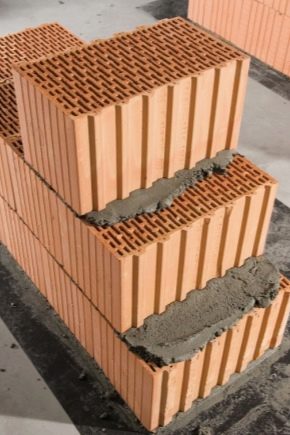
Aerated (porous) brick is a hollow ceramic block widely used in private and commercial construction. This material is made using a thermal method.
The finished product has high strength and good thermal insulation properties. Its application allows to reduce the power loads on the foundation, accelerate the pace of construction and reduce the risk of shrinkage of the structure.
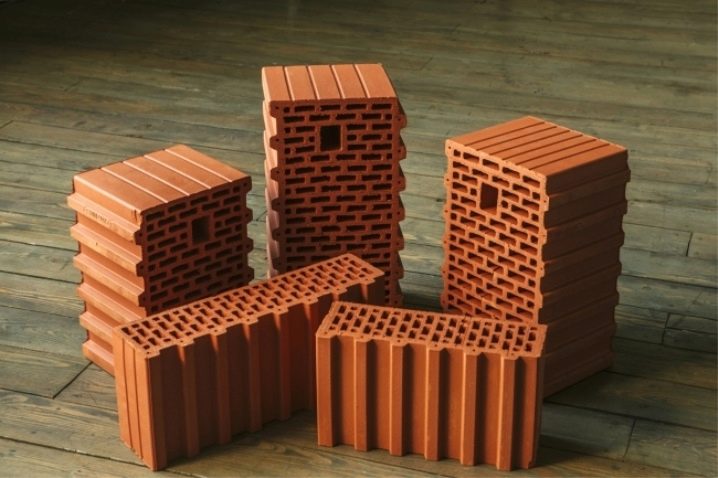
What is it and what is it for?
Porous brick is a building material that is made from a sand mixture, clay and specialized additives that are subject to rapid burnout (these include sawdust or peat).
The production process includes several main stages.
- Preparatory... At this stage, the clay and sand mass is cleaned, as well as their crushing on special equipment to a homogeneous state. In addition, specialized fast-acting additives are added to the raw materials. The quality of preparation of raw materials will largely determine the technical characteristics of the finished product.
- Pressing... The prepared mass is subjected to pressure under vacuum presses. As a result of this effect, products with specified dimensions are obtained at the output.
- Drying... Materials are sent to drying chambers in order to remove excess moisture from them.
- Burning... Produced in special oven equipment. In the furnaces, straw, shavings, sawdust or peat (depending on what raw material was used) burn out, and microscopic sealed air voids form in their place.
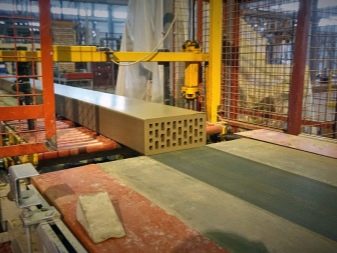
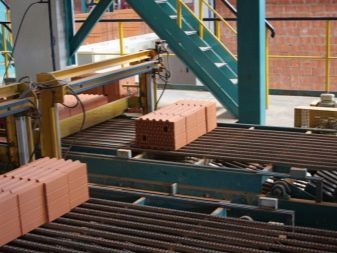
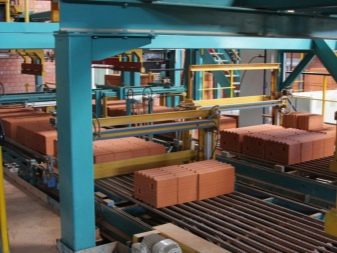

During the heat treatment of blocks, the organic material quickly burns out, as a result of which small sealed pores are formed in the blocks. Due to their good technical characteristics and performance, porous blocks are widely used for the construction of objects for various purposes.
They are used in construction:
- residential buildings;
- public buildings, the height indicators of which do not exceed 24 meters.
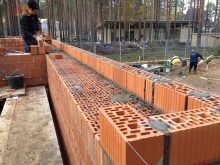

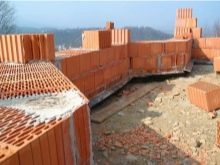
Aerated brick is capable of withstanding a power load of at least 150 kg per square centimeter. Because of this feature, the material is used in the construction of internal partitions and supporting structures.
Advantages and disadvantages
The porous ceramic block offers numerous advantages that drive the high demand for such products.
The main advantages of porous bricks include several factors.
- High strength of the material.
- Small mass. Due to the minimum weight, the load on the foundation of the structure is noticeably reduced, due to which there is no need to equip a powerful foundation.
- The ability to choose the optimal size for any scale of construction. Manufacturers produce ceramic blocks of the following standard sizes: 250x120x140, 250x380x219, 510x250x219 and 380x250x219 mm.
- Environmental friendliness. This type of blocks is made from natural raw materials, so that they do not emit toxic substances during operation.
- Excellent heat and sound insulation.
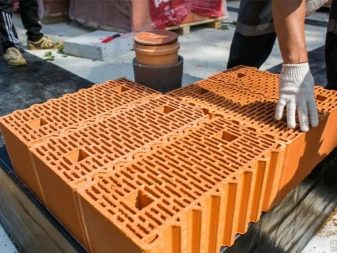
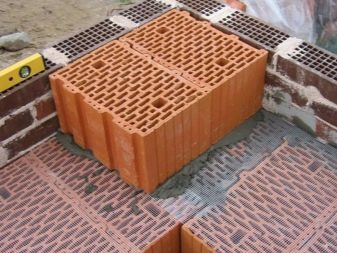
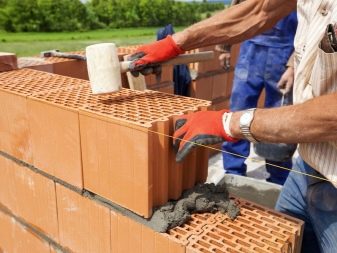
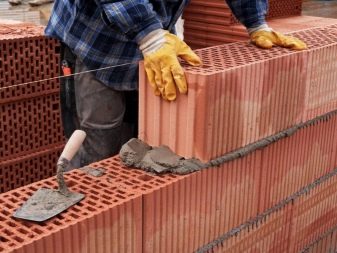
- Resistance to negative external influences. Buildings made of porous bricks are "not afraid" of atmospheric precipitation. In addition, they can withstand the same number of defrosting and freezing cycles with conventional bricks.
- Good sanitary and hygienic performance.On objects built from porous blocks, mold and mildew do not form.
- The presence of a tongue-and-groove system on the side parts of the bricks, ensuring their reliable connection without the use of cement mortar.
- Refractoriness. Porous brick not only does not support the combustion process, but is also able to withstand the effects of flame for several hours.
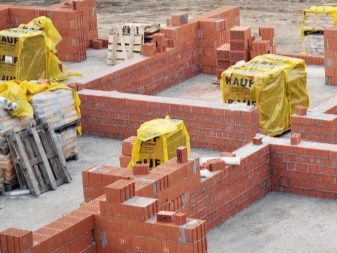
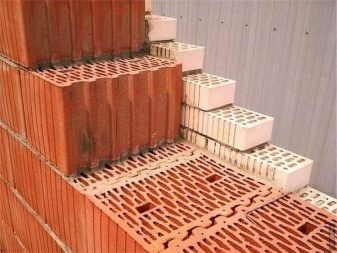
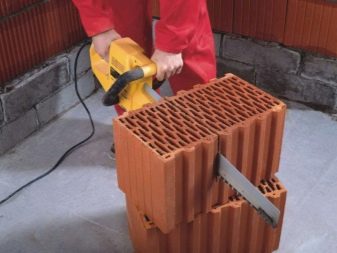
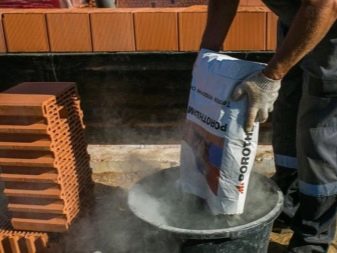
Despite the fact that porous blocks have many advantages, some builders refuse to use them in the construction of civil or industrial facilities. Often they are repelled by the rather large cost of this material, which is why consumers decide to buy budget products.
Main characteristics
Aerated brick has good technical parameters and performance.
Let's consider the main ones using the example of a double block with a size of 510 mm:
- density 800 g / m³;
- strength grade M-75;
- thermal conductivity 0.17 W / m ° С;
- frost resistance up to 100 cycles of freezing and thawing;
- vapor permeability up to 0.14 mg / (mh · Pa);
- water absorption up to 6%;
- sound insulation 51 dB (meets the requirements of SNiP 23-03-2003);
- fire resistance up to 10 hours.
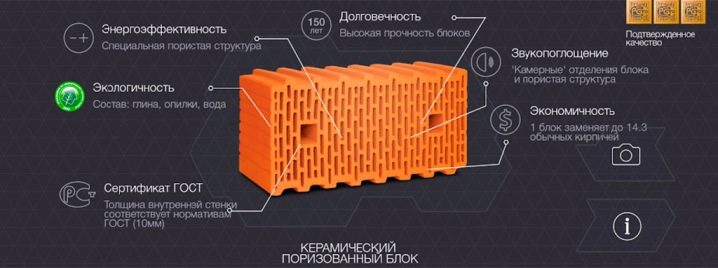
The technical characteristics of porous blocks fully comply with all standards and regulatory documents adopted in the construction industry. To purchase high-quality products with the declared parameters, you should ask the seller to provide certificates for goods or a manufacturer's passport for this material before buying.
Block dimensions
Modern manufacturers produce porous ceramic blocks in several standard sizes. They are designed for the construction of objects with different indicators of wall thickness.
If you plan to build a single-layer structure, bricks of 410 and 510 mm are most often chosen. It should be noted that insulation is not required for such a wall thickness.
For structures with two and three layers, stones with dimensions of 380, 300 and 250 mm will be optimal. Such walls will require insulation and external cladding.
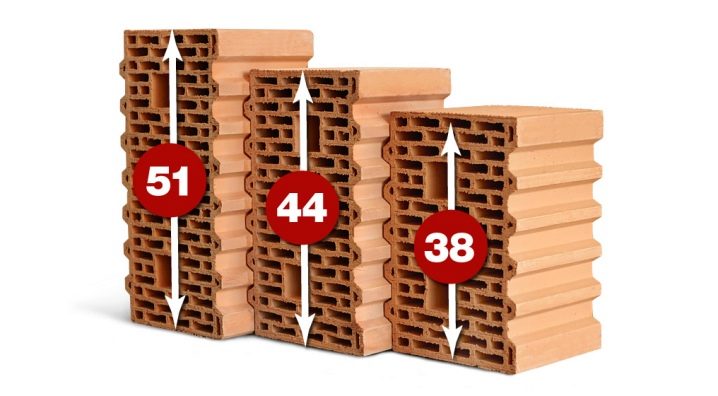
In addition to the standard sizes of bricks, manufacturers are engaged in the production of additional porous stones. They are often made in the form of block halves.
Additional building materials are used for laying corners, and they can also be used for more convenient dressing of the abutments of external and internal walls.
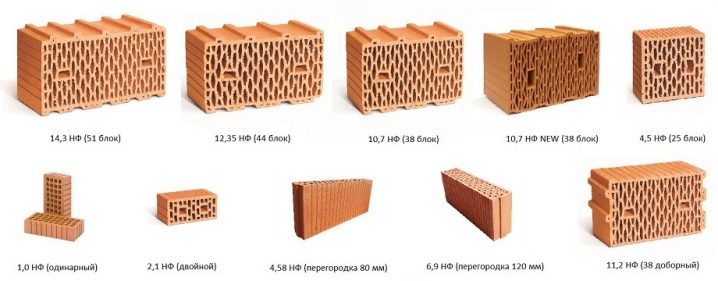
Differences from a hollow product
Porous ceramic blocks are visually very similar to hollow bricks. However, these two materials have significant differences. Hollow materials have through cavities or voids. These holes can be of different shapes: oval, round, square or rectangular. Due to such air formations, the brick is less durable than the porous material.
Hollow products are used only for the construction of:
- lightweight external walls;
- non-bearing partitions;
- to fill the wireframes of objects of various purposes.
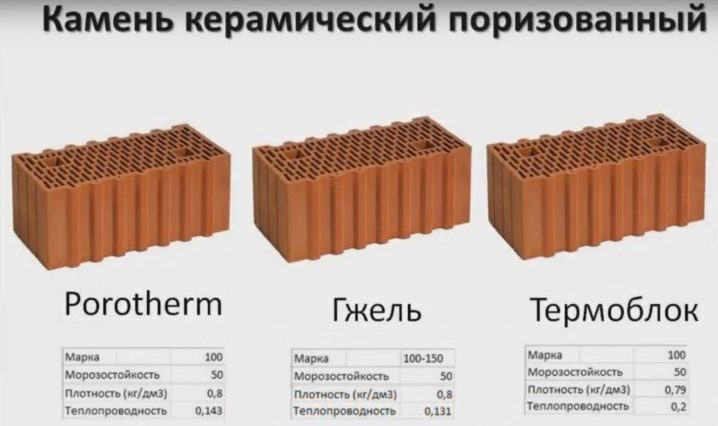
Porous bricks, in contrast to hollow bricks, have numerous small voids - pores. Compared to hollow products, porous materials have a lower density and a higher coefficient of thermal conductivity.
Reviews
Builders prefer porous bricks due to their excellent strength, low thermal conductivity and environmental friendliness.
According to consumers, structures made of this material are durable and strong. In addition, these blocks practically do not conduct heat, which is why a favorable microclimate for a person is created in the room, regardless of the temperature conditions outside.
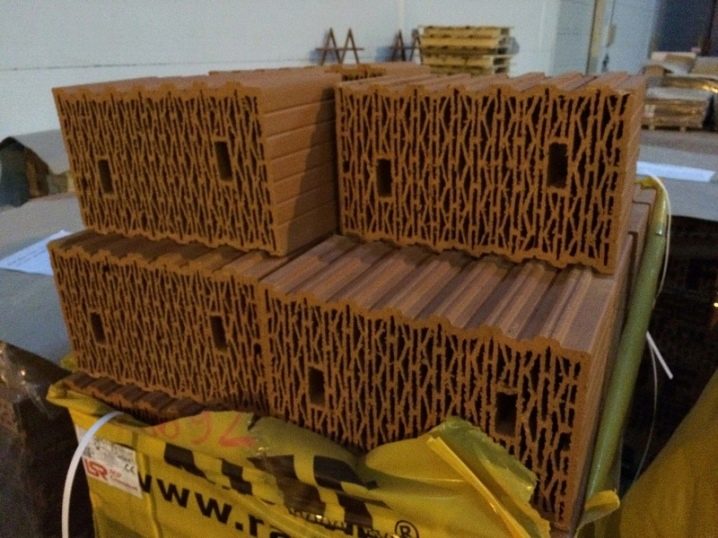
When constructing structures from porous blocks, the occurrence of cold bridges is excluded. Thanks to this feature, you do not have to hire a construction team to seal the external seams of the object.According to users, due to the use of porous ceramic blocks, one can hope for good sound insulation. This feature is most important for apartment buildings located in busy areas of the city.
Buyers include other advantages of this building material:
- lightness of brick;
- fast laying;
- fire resistance;
- mold resistance.

This material has some disadvantages. According to consumers, the use of porous bricks has its drawbacks.
- The need to protect the external walls of building structures from moisture. Neglecting this recommendation will lead to high moisture absorption of the blocks and their premature destruction. Facing the structure will lead to additional financial costs.
- Often times, the presence of cavities or air voids makes it difficult to drill holes.
- The fragility of the material. A lot of scrap is generated by careless transportation of products or careless loading and unloading.
- Difficult cutting of products due to the presence of cavities in the material.
- Restrictions on the number of storeys. In residential construction, porous bricks are used only for the construction of houses up to 9 floors.
- The high cost of products. According to buyers who have monitored prices for building materials, prices for porous blocks are 2-3 times higher than for other types of bricks.
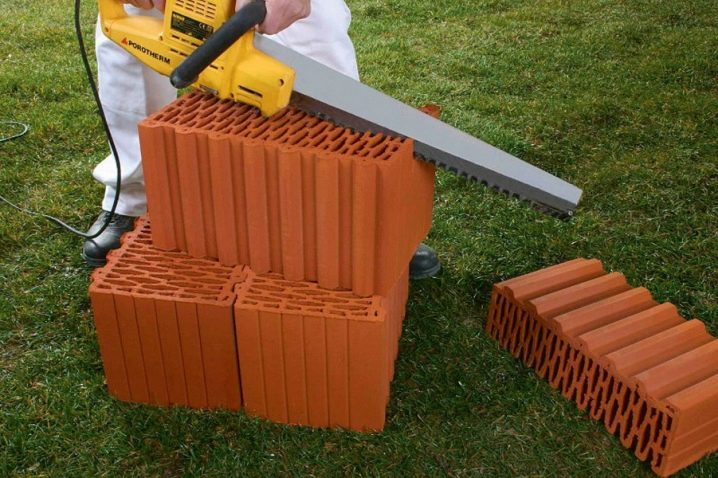
The last drawback is considered conditional. According to the statements of experienced builders, using porous blocks, you can speed up the construction process of a structure, save on the amount of material used (other types of bricks will be needed more due to their smaller size). In addition, it is not necessary to insulate buildings, saving money on thermal insulation materials and insulation work.
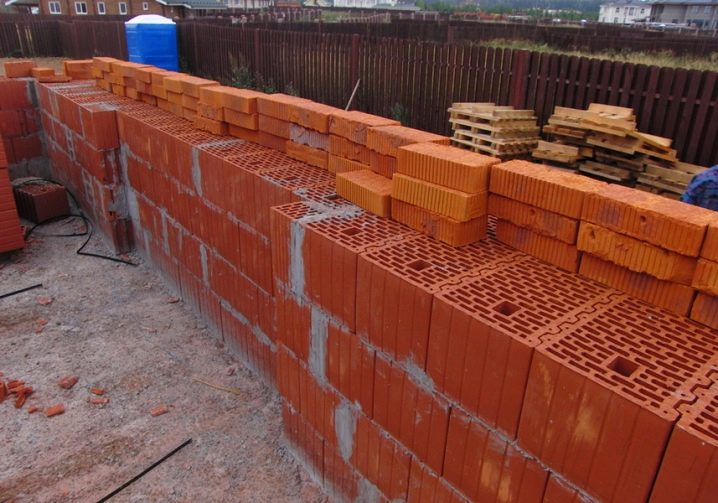
Aerated brick is the best alternative to hollow or ordinary ordinary artificial stone, as well as aerated concrete blocks.
Its technical characteristics are in many ways superior to those of conventional ceramic building materials. This is a "breathable" product that will keep you cool in summer heat and keep you warm in winter frosts.
For how to lay porous bricks with your own hands, see the next video.













The comment was sent successfully.